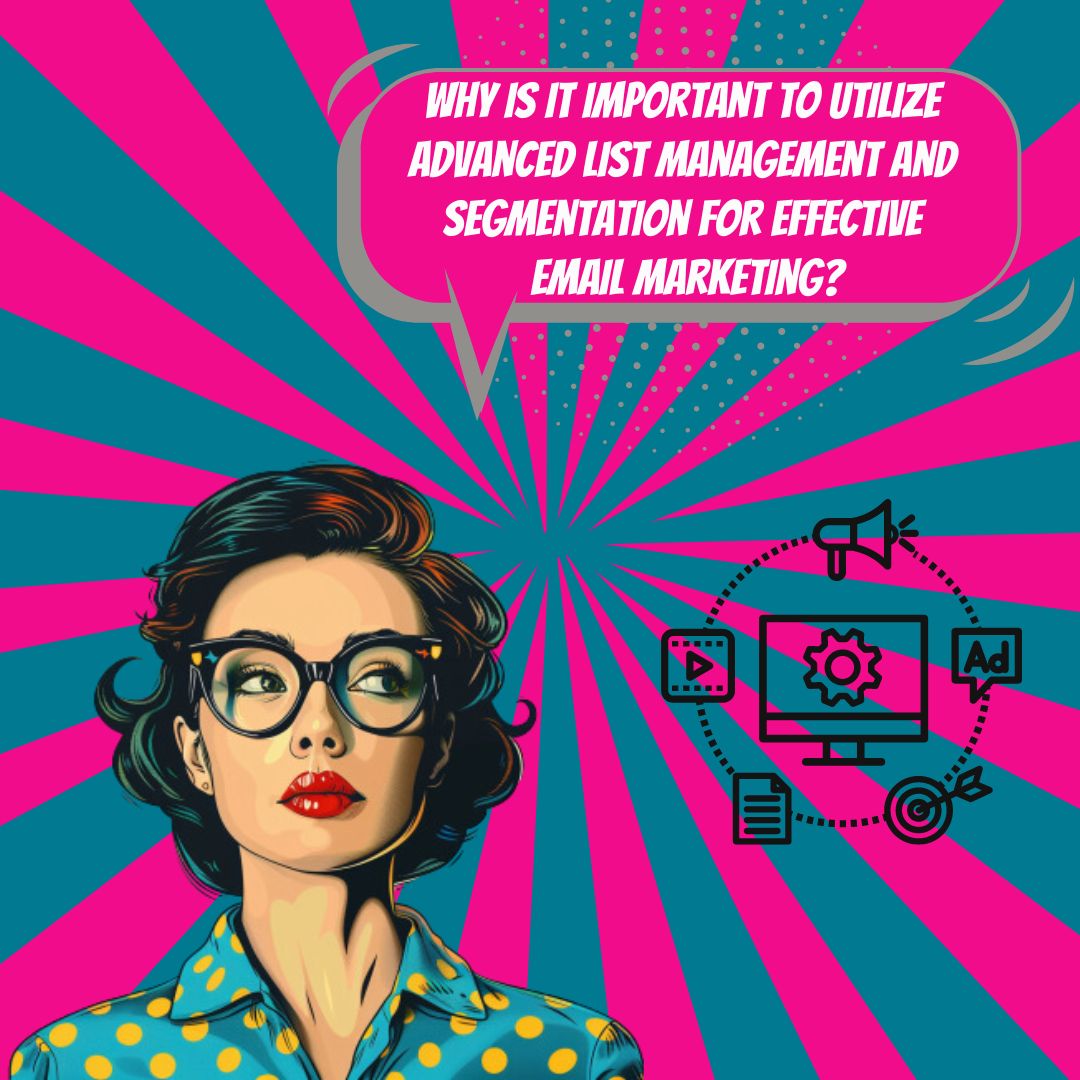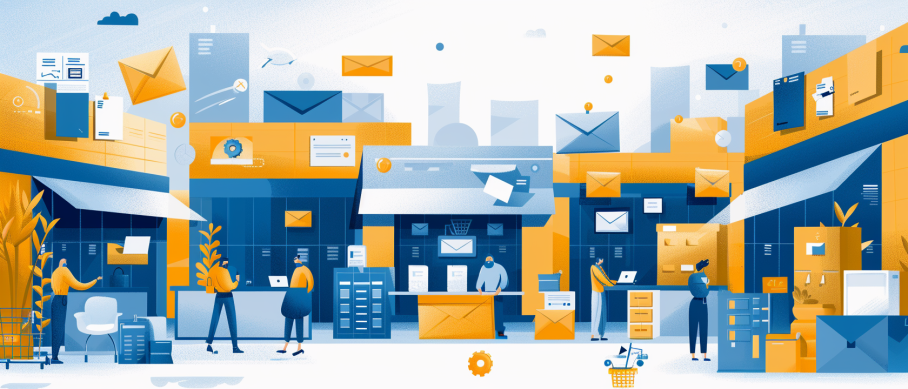Key Takeaways
✅ Implement Double Opt-In Subscription Processes: By ensuring that your subscribers actively confirm their email addresses, you lay the foundation for a cleaner, more effective email list. This proactive step could drastically reduce bounce rates and enhance overall campaign performance.
✅ Segment Your Email List: Tailoring content specifically to your subscribers’ demographics, interests, and behavior can lead to a 760% increase in email revenue, as reported by Campaign Monitor. Segmentation isn't just a fancy term; it's an actionable strategy that translates directly to your bottom line.
✅ Use Reliable Tools and Analyze Data: By leveraging the latest email marketing tools, you're not only streamlining your campaigns but also gathering invaluable data. Analytic insights can help you fine-tune your segmentation approach, potentially increasing open rates by up to 203%, according to HubSpot.

Introduction
Looking to turn your email list into a robust, revenue-generating machine? Well, let's talk reality: not all subscribers are created equal. Some might be itching to click the buy button, while others are just dipping their toes. That's where the magic of Optimizing Email Campaigns: Advanced List Management and Segmentation comes in. But let's not limit ourselves to just sprinkling some buzzwords and hoping for results—what does it truly mean to get your list in tip-top shape?
Introducing Email Segmentation – it's like organizing a party where everyone gets their favorite music and a plus-one that gets them buzzing. Imagine sending content that resonates on a personal level; you're not just another message in the inbox, but a welcomed guest! And with benefits like Higher open rates and Increased clickthrough rates, it's not just about feeling good—it's about tangible results.
As we dive deep into the world of emails, expect to uncover not just theories, but genuine, do-it-now solutions that can pump up your conversions and keep that ROI climbing. So stick around, because we're about to unleash some of the most sought-after secrets in the Advanced List Management playbook, guaranteed to shift your campaigns from just "meh" to "wow"!

Top Statistics
| Statistic | Insight |
|---|---|
| Industry Average for Key Performance Indicators (KPIs) | Understanding these averages helps marketers gauge campaign performance relative to industry benchmarks. |
| Segmented Emails | These drive 30% more opens and 50% more click-throughs than unsegmented ones, showing the power of targeted content. |
| Personalization Tactics | With 55% of marketers prioritizing its expansion, personalization is quintessential for engaged and profitable email strategies. |
| Email Users | The growing number of email users signifies expanding opportunities for businesses to connect with their audience. |
| Email Marketing Revenue Forecast | Projected to nearly hit $11 billion by the end of 2023, emphasizing the lucrative potential of optimized email campaigns. |
Understanding the Power of Email Segmentation
Have you ever noticed how receiving a one-size-fits-all email from a brand feels impersonal? Email segmentation swoops in to save the day, tailoring the conversation between you and the brand, making every message seem specifically crafted for you. By grouping email recipients based on their characteristics and behaviors, companies ensure that the offers and news you receive are aligned with your tastes and preferences. It's perhaps not surprising that this approach can lead to a 46% higher open rate on average—everyone likes to feel special, right?
The Many Faces of List Segmentation
Breaking down an email list isn't just about knowing your recipient's name; it involves a deep dive into who they are and how they interact with your brand. For instance, demographic segmentation could lead a clothing retailer to send distinct fashion tips to college students and business professionals, understanding that these groups have different fashion needs. Geography also plays a role, as someone living in the tropics probably wouldn't appreciate a sale on winter coats—this is where geographic segmentation comes into play.
Oftentimes, past behavior is the best predictor of future actions—behavior-related segmentation uses this principle to its full advantage. Take a segment of regular buyers; it makes complete sense to keep them in the loop about related products or loyalty programs, fostering a lasting relationship. Businesses can witness their conversion rates climb, thanks to this nuanced approach.
Advanced List Management Strategies
Optimizing your email lists means more than just cutting them into neat segments. Advanced tactics such as singling out those with items left in their shopping carts (abandoned cart segmentation) can squeeze out additional profits that were almost lost. Meanwhile, spotting who's new to your brand and who's ready to buy—sales funnel position segmentation—allows you to craft messages that guide them gently towards a purchase, depending on their journey stage.

Email engagement level segmentation is another fascinating area. By identifying who opens every email and who needs a little nudge, you can tailor your communication frequency and content, respecting their digital boundaries and decreasing the chances they'll hit 'unsubscribe'.
Don't forget the loyal customers—they are the backbone of your business. Customer loyalty segments embrace and reward them, enhancing their attachment to your brand.
Leveraging the Right Tools
Successful segmentation calls for the right arsenal of tools. Today's email marketing platforms like Campaign Refinery don't just send emails—they come with built-in segmentation capabilities, helping you pinpoint and send relevant content with grace and precision. When paired with automation tools, such segmentation becomes seamless, enabling personalized communication round the clock without needing a human constantly at the helm.
Best Practices for Your Email List
Of course, all this segmenting and personalizing would be for naught if your email list is cluttered with dead ends. Regular upkeep by removing bounced addresses and inactive subscribers keeps your messages landing where they should. Choose your tools wisely—email list management isn't just about sending stuff out; it's also about keeping tabs on how your audience responds and adjusting accordingly. Skip this step, and you might as well be shouting into a void.
In truth, embracing advanced list management and segmentation goes beyond just increasing metrics; it's about cultivating a relationship with your audience that feels genuine. Get it right, and your subscribers will stay engaged, loyal, and most importantly, ready to take the actions you're guiding them towards. By delivering personalized content that resonates, you inexorably boost engagement and set the stage for a thriving connection with your base.
AI Marketing Engineers Recommendation
Recommendation 1: Utilize Predictive Analytics for Smarter Segmentation: Implement predictive analytics to enhance your list segmentation. Use collected data to predict future actions of subscribers, personalizing content to address their preferences, needs, and purchase behavior. According to a study by Salesforce, high-performing marketing teams are 2.3 times more likely to use predictive analytics. By analyzing past open rates, click-through rates, and conversion data, create dynamic segments that evolve with your customers' behaviors, ensuring that your content remains relevant and effective.

Recommendation 2: Embrace AI for Real-Time Personalization: Leverage Artificial Intelligence (AI) tools to offer real-time content personalization within your email campaigns. Tailoring emails based on real-time behaviors can significantly boost engagement. For example, triggering emails based on actions taken on your website or within the email itself – like browsing a product category or clicking on a link – provides immediate value. Data from the Email Marketing Industry Census indicates that marketers who use AI for email personalization see a 70% improvement in their email campaign performance.
Recommendation 3: Integrate Multi-Channel Data for Omnichannel Segmentation: Integrate data from various channels (online behavior, purchase history, social media interactions) to craft a comprehensive view of each subscriber. Use this data for sophisticated segmentation, ensuring that your email communication resonates with the broader customer journey. By providing a seamless experience across all platforms, you increase customer loyalty and retention. According to a study by the Aberdeen Group, companies with strong omnichannel strategies see a 9.5% year-over-year increase in annual revenue, compared to 3.4% for those with weak omnichannel strategies. Tools like Adobe Analytics and HubSpot offer powerful solutions for integrating and managing multi-channel data effectively in your email campaigns.
Relevant Links
- Master the Art of WeChat Marketing
- Dominate the Short-Video Scene with Douyin and Kuaishou
- E-Commerce SEO Mastery: Tips for South Korean Online Retailers
- Navigating Japan's Unique Social Media Landscape
- Localize and Captivate: Content Marketing for the Russian Audience
Conclusion
In wrapping up this deep dive into optimizing email campaigns, it's clear that advanced list management and segmentation occupy the frontline in the quest to enhance email marketing effectiveness. The days of one-size-fits-all emails are long gone; today's smart marketers understand that personalization is key. By slicing your email list into focused groups, you’re opening the door to skyrocketing engagement rates and forging stronger connections with your audience.
Remember those standout stats: Segmented email campaigns can notch up to 46% higher open rates. Why? Because you're hitting the bullseye, delivering relevant content that resonates with the unique needs and preferences of each segment. And let's not overlook the practical benefits—lower unsubscribe rates and fewer annoyed customers.
Whether it's demographics, shopping behaviors, or simply where they stand in their purchase journey, understanding your subscribers is a game changer. But it’s not only about knowing them; it's also about acting on that knowledge using tools and techniques that inject precision and relevance into every email sent.
It boils like this: Neglecting segmentation is akin to ignoring the individual voices of your customer base. So, what's your next move? Will you harness the power of advanced list management to send messages that matter, create campaigns that count, and secure customer interactions that convert? Let's make that our collective goal. Let the insights you've gleaned here inspire and guide your next wave of email campaigns into richer, more fruitful waters.

FAQs
Question 1: What is email segmentation and how does it improve email campaigns?
Answer: Email segmentation is a strategy that breaks down your email list into smaller, more manageable groups based on characteristics they share. Imagine having a big pot of soup – that's your email list. Now, when you add the right spices to each bowl you serve (that's your segmentation), every bowl tastes just right for the person eating it. That tailored flavor is what makes your email campaigns hit the spot, leading to better open rates and more clicks – it's like everyone getting their favorite dish!
Question 2: What are the benefits of email segmentation?
Answer: The perks of dishing out those custom flavors (a.k.a. email segmentation) include getting more people to come back for seconds (higher open and click-through rates), more satisfied customers who end up buying (increased conversions), and a better understanding of what makes your diners happy (improved customer understanding). It basically spices up your entire email marketing recipe!
Question 3: How do you segment an email list?
Answer: Segmentation is like throwing a dinner party and making sure everyone gets a seat at the right table. You can group your guests by their backgrounds (demographic segmentation), where they're from (geographic), their past meal choices (behavioral), how often they come to your diner (engagement level), and so many other ways to ensure everyone's having a good time and the conversation flows!
Question 4: How do you maintain a clean email list?
Answer: Keeping your list clean is like maintaining a tidy kitchen. Regularly clear out the spoiled goods like bounced email addresses, those who've said they're full (unsubcribed users), and folks who haven't visited in a while (inactive contacts). And you know, make sure people want to be at your table by using a double opt-in – no party crashers here!
Question 5: What are the key factors to consider when choosing an email list management tool?
Answer: When you're looking for the perfect kitchen gadget to help manage your guest list, you want to check if it can handle the right types of segmentation, if it's got automation to serve up emails at the right time, if it can tell you which dishes were a hit (analytics and insights), if it's easy to use, and if it plays well with your other kitchen tools (compatibility).
Question 6: How can I effectively segment my email list for targeted campaigns?
Answer: To ensure your campaigns are as effective as telling the right jokes to the right crowd, slice up your email list based on people's demographics, what they've bought from you before, interactions they've had with your brand, or what they like. It's about making sure each message feels like it's been hand-crafted just for them.
Question 7: What are the common mistakes to avoid in email list management?
Answer: The no-no's of list management? Letting your list get messy with outdated info, serving the same bland meal to everyone, ignoring what your guests have told you they like (subscriber preferences), and not paying attention to which of your dishes are flying off the shelves (analytics). These mistakes can turn a bustling dinner party into a room full of yawning guests pretty quickly.
Question 8: How does email segmentation drive conversions?
Answer: It's like recommending the perfect dessert after a great meal – when you nail down what your customers are craving through email segmentation, they're far more likely to indulge (or in business terms, convert). It makes every message feel personal, and who doesn't love feeling like they're the guest of honor?
Question 9: How do you optimize email list segmentation for conversions?
Answer: To get the best results from your segmentation, it's like fine-tuning a recipe. Keep an eye on the feedback (reviewing metrics), taste-test often (customer feedback), and adjust your seasoning as needed (refine segmentation). And don't forget the secret sauce – A/B testing to figure out what truly tickles the taste buds of each segment.
Question 10: What tools are available for email list management and segmentation?
Answer: When you're ready to whip up some killer email campaigns, there's a buffet of tools ready to help. You've got the all-in-one solutions like Mailchimp, the strong services like SendGrid, and other great picks like OneSignal. They come loaded with all the gadgets you need – segmentation, automation, analytics – to help you dish out the best emails on the block.








